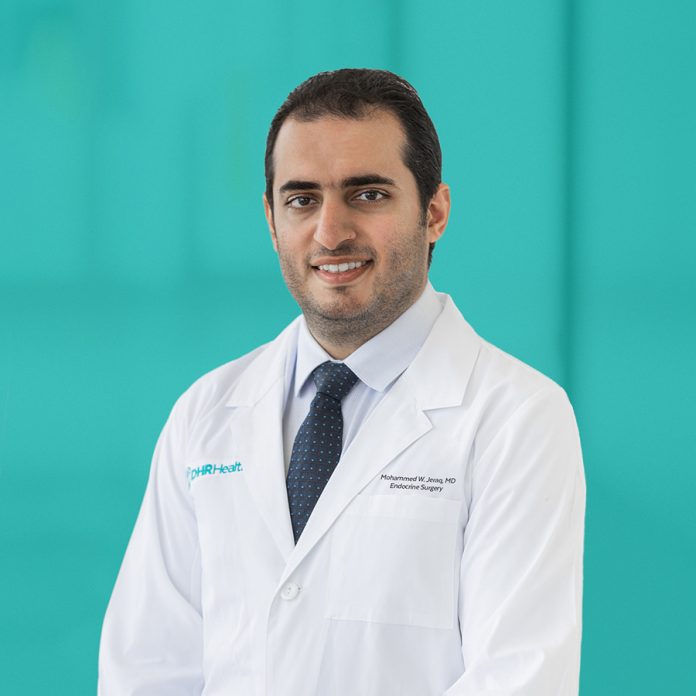
Dr. Mohammed W. Jeraq
DHR Health Diabetes and Endocrinology Institute
The thyroid gland is a butterfly-shaped gland located in the neck, just below the Adam’s apple. It is made of two lobes that wrap around the trachea (windpipe). This gland is essential in making thyroid hormone, which is released into the bloodstream and then travels to various parts of the body to regulate metabolism. The signs and symptoms of thyroid disease are related to abnormalities of the thyroid hormone level or enlargement of the thyroid gland. An underactive thyroid, called hypothyroidism, occurs when the thyroid gland does not produce enough thyroid hormone. Symptoms of hypothyroidism include fatigue, weight gain, cold intolerance, dry skin, and constipation. An overactive thyroid, called hyperthyroidism, occurs when the thyroid gland produces too much thyroid hormone. Symptoms of hyperthyroidism include weight loss, tremors, rapid heartbeat, and heat intolerance. Since 80% of thyroid disease occurs in women, there can be menstrual irregularities, as well, heavier periods with hypothyroidism and lighter periods with hyperthyroidism. Abnormalities in the thyroid hormone level can be readily diagnosed with a simple blood test.
Enlargement of the thyroid gland, known as a goiter, can also lead to symptoms by compressing adjacent structures in the neck. Pressure on the esophagus can result in difficulty swallowing, giving you the feeling that food and/or liquids are getting stuck in the neck. Pressure on the trachea can produce a choking sensation, breathing difficulty, cough irritation from the neck, or frequent throat clearing. Pressure on the nerve to the voice box can result in hoarseness or a change in voice tone. If the enlargement of the gland is significant, it will produce a visible swelling in the lower neck. Typically, thyroid enlargement is due to benign (non-cancerous) growths within the thyroid, but, occasionally, the growth is due to cancer.
Thyroid surgery involves either taking a part of the thyroid gland causing symptoms or the entire thyroid gland. Surgery is the optimal method to treat certain situations where the thyroid is overactive or if the thyroid is enlarged and compressing adjacent structures. Additionally, if thyroid cancer has been found within the thyroid or there is concern the thyroid has cancer, surgery would be essential. In this scenario, an ultrasound examination of the thyroid is essential for diagnosing the reason the thyroid is enlarged or determine the presence of tumors. The ultrasound can then be used to guide a necessary biopsy, by drawing out cells from within the tumor to examine under a microscope for the presence of cancer. Nowadays, when this examination is uncertain, the tumor cells can be further analyzed for gene or molecular abnormalities that can predict the likelihood of thyroid cancer.
DHR Health Diabetes and Endocrinology Institute can help guide you through the process of thyroid surgery. If you or a loved one would like more information or would like to speak to one of our experts, please call DHR Health Diabetes and Endocrinology Institute at (956) 362-5650.




